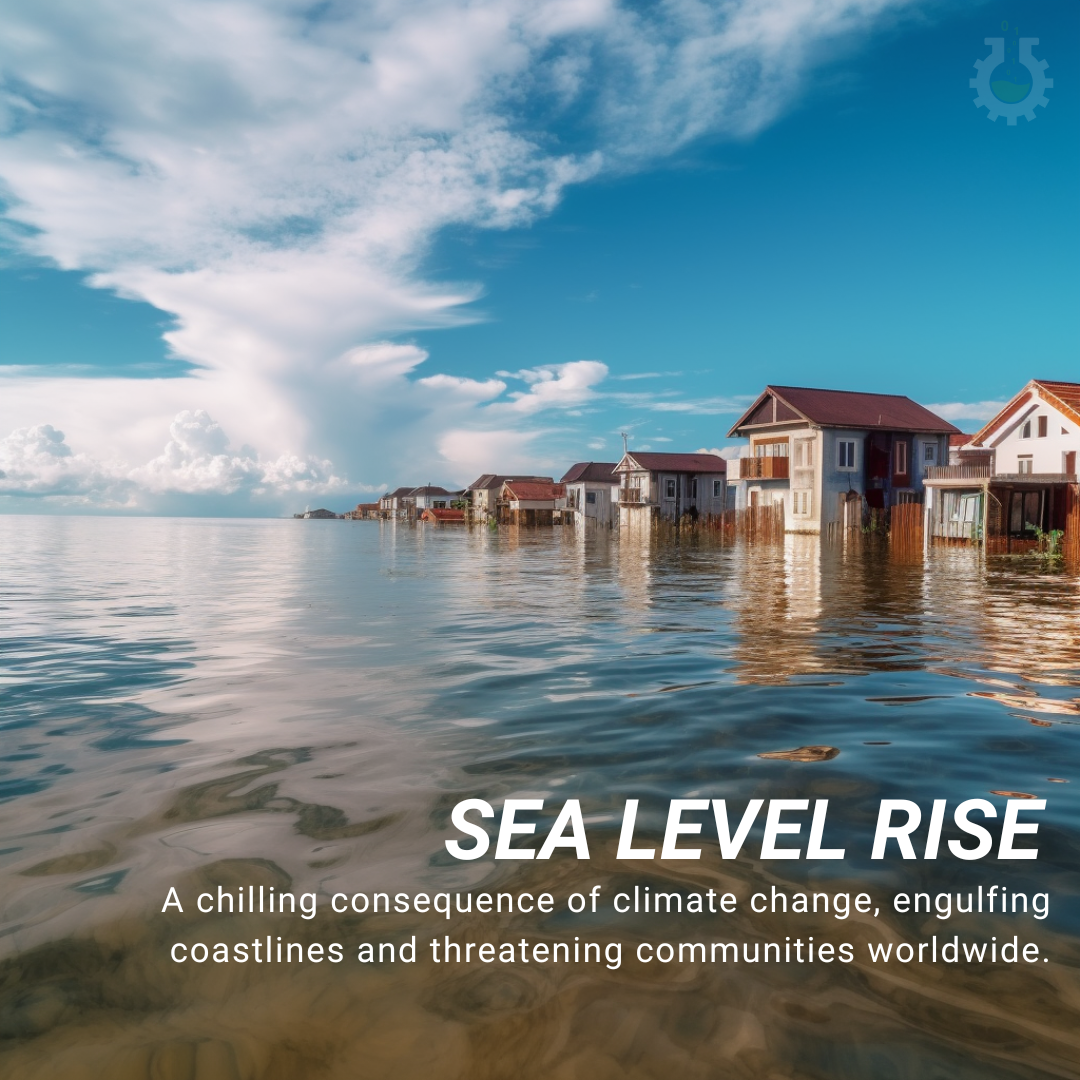August 8, 2023
Climate Change Poster Collection of the Day – Sea Level Rise
Book a Demo
Today’s Climate Change Poster Collection features Sea level rise, a concerning consequence of global warming, is a growing issue that cannot be ignored. This rise in sea level is primarily caused by the expansion of seawater as it absorbs heat and the melting of land ice. As our world continues to warm due to human activities, the rate of global sea level rise is rapidly accelerating. This acceleration is primarily attributed to increased ice melting in Greenland and Antarctica, two of the largest stores of ice in the world.
Coastal communities, economies, infrastructure, and ecosystems worldwide are experiencing significant threats from this rising sea level. These threats include destructive storm surges, saltwater intrusion into freshwater resources, and land loss. The consequences of these threats are devastating for both human populations and the natural world.
However, the impacts of sea level rise are not uniform across the globe. They vary due to factors such as ocean currents, land subsidence, and the gravitational effects of melting polar ice. Some regions may experience more severe effects than others due to these factors, creating a complex and challenging issue for global policymakers and scientists.
In response to these threats, strategies for adapting to sea level rise are being developed and implemented. These strategies include building sea walls, elevating structures, developing floating buildings, and restoring natural protective systems like mangroves and reefs. In some cases, relocating communities is the only viable option.
It’s important to note that sea level rise is caused by a combination of factors. These include sea water expansion as it warms, the melting of glaciers and ice sheets, and the depletion of groundwater. Each of these factors contributes to the overall rise in sea level, creating a complex problem that requires a multi-faceted solution.
As of 2019, the rate of sea level rise is approximately 3.6 mm/year, nearly double the average 20th century rate of 1.7 mm/year. This increase is alarming and highlights the urgency of addressing this issue.
Looking forward, projections estimate a sea level rise of 0.5 to 1 meter by 2100 due to sustained warming of the atmosphere and oceans. This would result in coastal flooding, coastal erosion, threats to coastal communities and ecosystems, and forced migration and displacement. Such a drastic change would have massive implications for human populations, ecosystems, and the global economy. Therefore, it’s imperative that we continue to study, understand, and act on this pressing issue of sea level rise.
Discover an inspiring collection of climate change posters.



